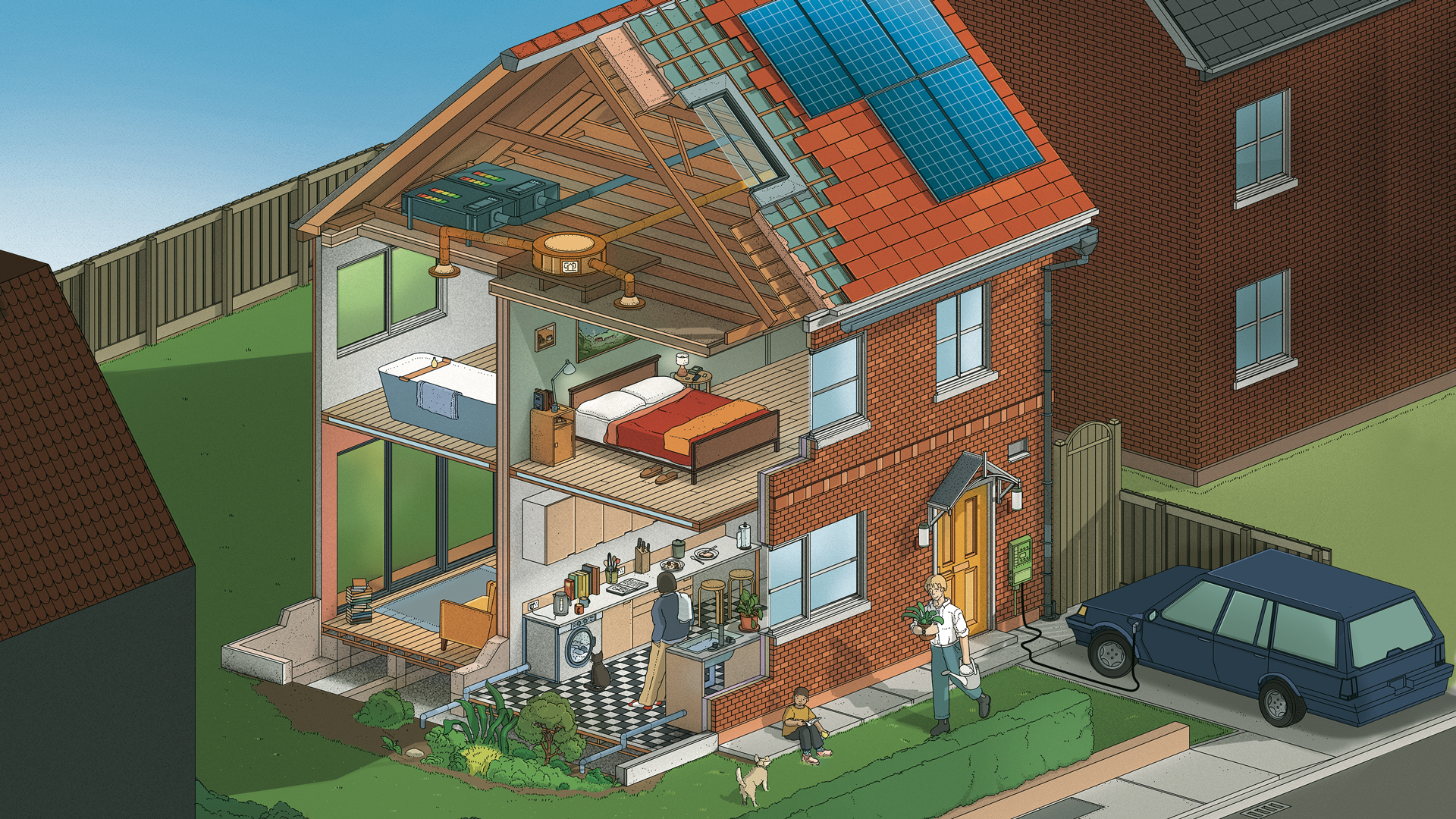Get the latest news and insight into how the Big Issue magazine is made by signing up for the Inside Big Issue newsletter
Walls
The house of the future should be both airtight and breathable. An ‘airtight’ layer on the inside wall means that warm, moist air from areas like the kitchen and bathroom can’t seep into the building fabric. But if moisture does get into the walls, it needs an avenue to escape before it turns into condensation and leads to mould, damp and structural damage.
“It’s about controlling air movement, which helps you save energy, but it’s also about controlling moisture,” Lewis says.
New builds can install breathable membranes made from synthetic polymers, but plaster also works well.
Ventilation, energy and heating
Most of us open a window when we need fresh air. But if it’s cold outside, temperatures in your house will quickly plummet, and pollution and allergens will flood in.
An effective ventilation system solves this problem. A Mechanical Ventilation Heat Recovery (MVHR) unit uses warmth from moist, stale air to heat cold air drawn from outside. Filters on the machine sift out pollution and pollen particulates.
Advertising helps fund Big Issue’s mission to end poverty
Installing a MVHR system reduces heating demand and can save you 25%-50% on energy bills, the Renewable Energy Hub estimates. The systems are compatible with heat pumps, which pull warmth from the ground or the air around a building.
Water waste system
The amount of available water could be reduced by 10%-15% by 2050, the Environment Agency estimates.
Recycled greywater – wastewater from baths, showers, washing machines, dishwashers and sinks – can help us meet the shortfall. Treated greywater can irrigate gardens and flush toilets, saving approximately 70 litres of drinkable water per person per day in domestic households.
New greywater systems don’t come cheap – a top-line model currently costs between £2,000-£3,000. But more cost-effective ones are currently being developed in Europe and America for household use. Low-tech options are also available, like the ‘laundry to landscape’ model. This greywater system doesn’t alter the household plumbing: a diverter valve directs greywater from the washing machine drain hose to an irrigation system.
Windows
Windows should be triple glazed to help with insulation. But as UK summers heat up, they also need to be positioned strategically.
Buildings with windows facing one way – a common occurrence in flats – are much harder to ventilate as they don’t allow for cross breeze. Windows should have a north and south aspect, rather than east and west, to prevent the sun beaming directly into homes. External shutters can help you beat the heat, as can painting outside walls and roofs a pale, heat-reflecting colour.
Advertising helps fund Big Issue’s mission to end poverty
At least one operable window in every room is essential.
Solar panels
Photo-voltaic (PV) solar panels capture energy from the sun and convert it into electricity.
There were more than 120,000 solar panel installations in the first six months of this year, industry data suggests – a record high. The average PV system costs roughly £5,500, but you’ll eventually save money by reducing your reliance on expensive power from the national grid.
The Energy Saving Trust estimates that a typical household with a 3.5 kilowatt-peak system – the average solar system installed by UK houses – can reduce its energy bills by anywhere between £190 and £465 per year. You can also make money from your PV systems. When a solar household generates energy that it doesn’t use, this energy is pumped back into the grid. Under a government scheme called the smart export guarantee (SEG), companies have to pay customers for this spare electricity.
These rates vary by supplier, but it’s more cost effective to store energy for later than to pump it back into the grid – so the house of the future should have solar battery power, too.










